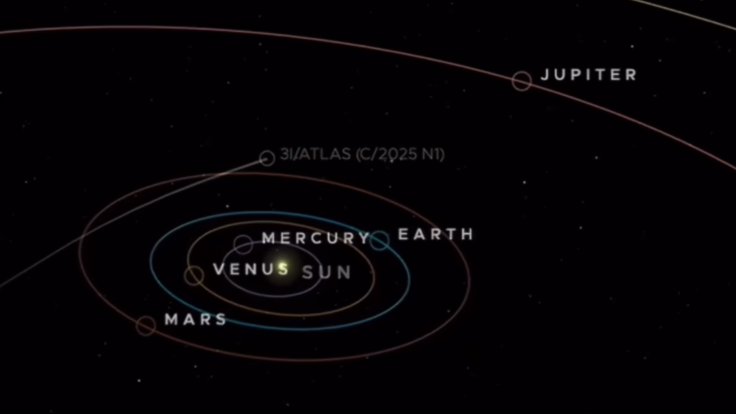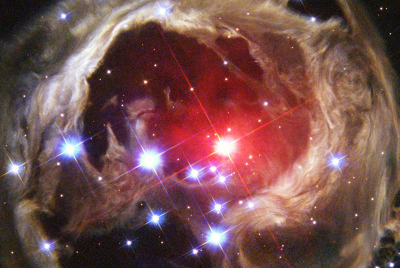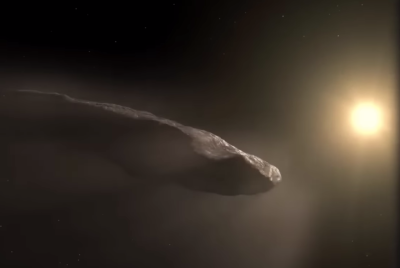Alien Invasion 2025: Mystery Object 'Hurtling Toward Earth' Sparks Global Panic and Wild Invasion Theories
Scientists urge calm as conspiracy theories explode over an unidentified object reportedly heading toward Earth.

Astronomers have confirmed the discovery of a new interstellar object passing through the solar system sparking fascination and, online, a wave of misinformation claiming it could be an alien craft 'hurtling toward Earth.'
The object, estimated to be the size of a large skyscraper, has become a focal point for doomsday predictors and UFO enthusiasts, who claim its trajectory is not natural and that it represents the vanguard of an impending alien invasion.
What's Actually Happening
The object, officially designated 3I/ATLAS, was first detected on 1 July 2025 by the Asteroid Terrestrial-impact Last Alert System (ATLAS) telescope in Hawaii. Scientists later confirmed that its trajectory and velocity mean it originated beyond our solar system, making it only the third known interstellar object after 1I/'Oumuamua (2017) and 2I/Borisov (2019).
NASA and the European Space Agency (ESA) have stressed that the object poses no threat to Earth. Its closest approach to Earth, expected in late December 2025, is projected to be no nearer than 50 million kilometres (about 31 million miles)—more than 130 times the distance to the Moon.
According to NASA's Planetary Defence Coordination Office, early data show that 3I/ATLAS is likely a natural fragment. Its unusually high speed of about 26 kilometres per second (over 58,000 miles per hour) is far too fast for it to have originated within our solar system, and its hyperbolic trajectory confirm it will eventually leave the solar system again.
Why the Object Sparked Viral Panic
Speculation about an 'alien visitor' spread rapidly online after several social media accounts described the object as 'fast-moving toward Earth'. Within days, hashtags such as #UFOAlert and #AlienInvasion2025 began trending.
The panic has been fueled by lingering controversies surrounding the first interstellar object, 'Oumuamua, which was famously theorized by some, including Harvard astrophysicist Avi Loeb, to be a potential alien artifact due to its unusual shape and acceleration.
A statement from the International Astronomical Union (IAU) urged the public to rely on verified data. 'Interstellar objects are rare but natural,' it said. 'Their detection provides valuable insights into planetary formation not evidence of extraterrestrial activity.'
Experts echoed that message. 'The shape and motion of 3I/ATLAS are consistent with natural debris, not technology,' explained Dr Claire Stanton of the UK's Royal Astronomical Society. 'It's moving fast, yes, but that's typical for interstellar fragments. There's no danger and certainly no invasion.'
Scientific Significance
Researchers are excited because 3I/ATLAS gives scientists another chance to study interstellar material firsthand. Spectroscopic observations suggest it contains volatile compounds like frozen carbon monoxide and water ice, similar to comets, offering clues about the chemical makeup of distant planetary systems.
Adding to the public's fascination, the object has reportedly released a sudden, unexpected burst of energy and strange emissions as it approaches the Sun, a behavior that, while likely natural outgassing, has been seized upon by theorists as evidence of a controlled process.

NASA says missions such as JWST and ground-based observatories will continue tracking its brightness and rotation patterns through late 2025. Scientists hope to compare it to 'Oumuamua, which sparked years of debate after exhibiting an unexplained acceleration behaviour later attributed to outgassing.
The Bottom Line
Despite the dramatic headlines, there is no evidence that 3I/ATLAS is artificial or that it poses any risk to Earth. Instead, experts view it as another rare opportunity to study interstellar space visitors. As NASA summarised in its official bulletin: '3I/ATLAS is an interstellar object passing safely through our neighbourhood. It is not on a collision course with Earth.'
For now, 3I/ATLAS remains a fascinating, natural wonder—a messenger from another star system, not an invader. But its journey through our cosmic neighborhood is a powerful reminder of how much is still unknown about the vast universe beyond our world.
© Copyright IBTimes 2025. All rights reserved.





















